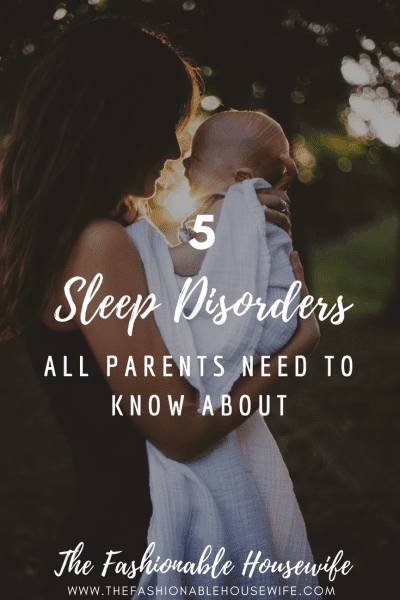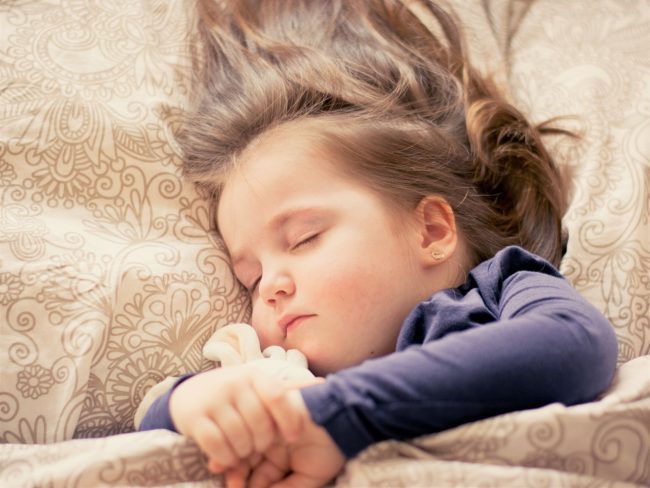
Sleep is always a trying issue for parents. For the most part, parenting — especially the early years — is about a lack of sleep. As a parent, you have to find ways to maximize your sleep, and balance this with ensuring your child is as safe and well-rested as possible.
Most parents expect that, after the early years, problems with sleep begin to fade. There will always be the occasional disturbed night, but for the most part, you and your child fall into a comfortable rhythm. However, this isn’t always the case as, like adults, children can suffer from sleep disorders.
This can come as a shock to many parents, as most of us associate sleep disorders with adulthood. However, children can and do suffer from a range of sleep disorders, and it’s beneficial for parents to learn more on this subject. Below, you will find an overview of the most common childhood sleep disorders, so you know what to look out for as your child grows…
#1 – Night terrors
Many people confuse night terrors with nightmares, but there is actually a major differentiating factor between the two: with night terrors, the child doesn’t wake up. They may shout, scream, cry, or otherwise move, but are actually still sound asleep. In some ways, this makes night terrors preferable to nightmares, as most children who experience night terrors do not even know they have happened— which is not the case with nightmares.
Nevertheless, dealing with infant night terrors is something many parents struggle with, especially as their child appears to be so deeply distressed during an episode. While it is natural instinct for parents to want to comfort their children when they are distressed, try to remember that your child doesn’t know what’s happening, and it is extremely unlikely they will have any memory of a night terror in the future.
Night terrors can be distressing, but they are not usually indicative of any underlying issues or problems that your child may be experiencing. However, if you are concerned by the frequency of your child’s night terrors, there is no harm in asking your doctor for further advice on how to manage the situation as well as possible. This is particularly important if you have other children in the house, who may be woken by night terrors they don’t understand, and will naturally find rather alarming to witness.
#2 – Sleepwalking
Sleepwalking is very common in children, with statistics indicating around 17% of children will sleepwalk between the ages of four and 12. Sleepwalking is rarely indicative of any deeper problems, but it can cause issues and disruption when it occurs.
The biggest issue with sleepwalking is the dangers it can pose. If your child is walking around your home while they are asleep, then the risk of injury can become overwhelming. As soon as you know that your child has sleepwalking episodes, there are steps you can take to reduce the risks of the condition. For example, you may want to install a bedroom alarm that can alert you when your child leaves their bed.
As with night terrors, the issues caused by sleepwalking aren’t particularly experienced by your child, though it can be distressing for parents to have to witness. This is an important fact to remember, especially if you find yourself confronted with the desire to wake your child during an episode of sleepwalking. This is generally cautioned against; instead, gently steer them back to bed whenever possible.
#3 – Excessive daytime tiredness
There are numerous causes for daytime tiredness, and it’s usually worth reporting to your doctor if your child appears to be excessively sleepy during the day. However, the major cause of daytime tiredness isn’t usually a health condition; it’s simply that your child isn’t getting the sleep they need.
Here’s a quick, general guide to the amount of sleep that children need throughout their early years. The total amount is listed below, though this will be divided into different naps and longer phases of sleep:
- Newborn – 4 months: 17 hours per day/night.
- 4 months – 1 year: 15 hours per day/night
- 1 – 3 years: 12 to 14 hours per day/night.
- 3 – 6 years: 11 to 12 hours per day/night.
- 7 – 12 years: 10 to 12 hours per day/night
- 13 – 18 years: Eight to 10 hours per night
If your child isn’t getting as much sleep as listed above, then this alone is likely to be the cause of daytime tiredness. However, if they are sleeping as much as they should be and they still display symptoms of excessive tiredness during the day, it may be worth speaking to a doctor.
#4 – Bedwetting
Bedwetting is incredibly common; 10-15% of children will continue to have bedwetting episodes up until the age of six. Bedwetting is not inherently dangerous or a sign of ill health, though it can be mentally distressing for a child to experience.
There are various ways of coping with bedwetting, though mostly, the management of the condition tends to just involve time. Most children will grow out of bedwetting in time, but until then, you may want to consider:
- Schedule your child’s liquid intake with a slant towards a high intake at the start of the day, and a lower intake in the evenings
- Eliminate potential bladder irritants from your child’s food and drink
- Ensure your child visits the bathroom prior to going to bed for the evening
It is worth noting that waking your child up during the night to visit the bathroom is generally not recommended. This can exacerbate issues with sleeplessness, and is often not even effective at resolving bedwetting issues.
If bedwetting continues after your child has turned six, it’s usually best to consult with a doctor for further advice and assistance.
#5 – Sleep apnea
Sleep apnea is a condition that causes a person to stop breathing during the night. Admittedly, this description sounds incredibly alarming, but don’t worry: breathing resumes almost instantly. The brain immediately wakes the person up so they can move and resume normal breathing function; few people remember this, as they go back to sleep immediately, but their normal sleep rhythm is compromised by the condition. As a result, one of the key symptoms of sleep apnea is excessive daytime tiredness— all of those micro-waking moments take their toll on a sufferer’s ability to get adequate rest.
Sleep apnea is less common in children than it is in adults, but it can and does occur. Sleep apnea can often be misdiagnosed as ADHD, so if your child has been diagnosed with this condition, you should definitely keep an eye out for the other established sleep apnea symptoms:
- Mouth breathing
- Noticeable pausing in breathing during sleep
- Poor attention span and difficulty concentrating (this symptom is often why sleep apnea is confused for ADHD)
- Snoring; 10% of children who snore will have sleep apnea
Sleep apnea is not dangerous, though the issues it causes — particularly with tiredness and poor concentration — can be lifestyle-affecting. The condition is usually managed with a CPAP machine; while unwieldy, this treatment has proven to be very effective at reducing the problems caused by sleep apnea.

In conclusion
Sleep disorders can present a number of challenges to both parents and their children but, thankfully, there are ways and means of managing these conditions. If any of the above sound familiar to you, then it’s always best to discuss matters with a doctor and follow their advice in regards to helping to remedy the situation.



